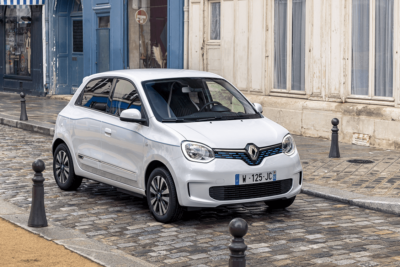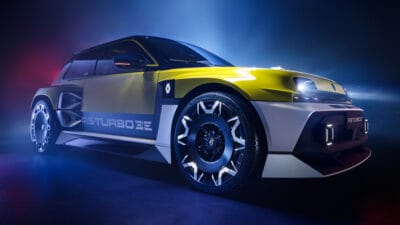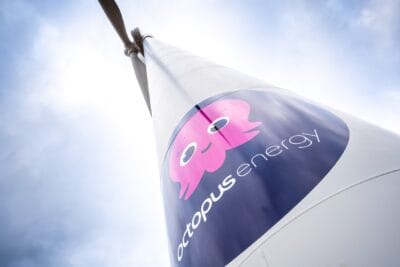Volkswagen is realigning their technical development
Volkswagen has announced that it is realigning the focus and working methods of Technical Development (TD) to shift towards electromobility and digitalisation. According to Chief Development Officer Thomas Ulbrich, this will also have a massive impact on future electric cars such as the Trinity.
Ulbrich’s motto for the R&D unit he heads is now ‘software first’ instead of the ‘hardware first’ priority that has long the German carmaker’s motto. “Software is the core and driver of our transformation,” Ulbrich says. “The world used to be simple, a Beetle was just hardware. Our ID. models are more software than hardware.” And that evolution will continue at a rapid pace: According to Ulbrich, the Trinity will contain another two to two-and-a-half times as much code as the current ID.3.
Volkswagen sees enormous potential in software, consistent networking and the associated transformation from automaker to a tech company. “We are providing additional impetus for electromobility, the business with the software – and in the long term – autonomous driving,” says the manager, who was responsible for the market launch of the ID. models for a long time as eMobility board member.
So far, development has started with the component itself. “The starting point in vehicle development is the new functions catering to customers’ needs,” Ulbrich says. “The new development process will therefore be focused on functions and systems rather than on components.” He explains that if a customer wants to watch a movie in an autonomous driving car in the future, numerous components must harmonize with each other: You need a large display, the appropriate sound experience, a lighting mood, a comfortable seating position, but still ensuring safety. “We have to clarify the requirements in the interdependencies early on,” said the Chief Development Officer.
The Sandkamp campus, whose construction is scheduled to begin this year, is supposed to help with such projects. The development centre is intended to enable agile work structures. According to Ulbrich, the individual office of the specialist who has been quietly optimizing his component has had its day and is to be replaced by a communicative open-space area. But this is not just about the development engineers themselves: There will also be an integration centre on the campus, where employees from other business units will work alongside the developers – for example, from purchasing, production, quality assurance and so on. Ulbrich hopes that this will result in short and efficient coordination paths.
However, these tasks and the change in mindset also require the right personnel. TD employs 11,500 people, a large proportion of whom are now to be prepared for the new tasks and ways of working through “extensive qualification measures.” According to Ulbrich, this is already the case for the first 100 employees, and up to 4,000 more will follow. The biggest challenges here are merging the complex work areas and changing the mindset to fast-cycle software development, Ulbrich says.
As a result, a new vehicle project should be completed in 40 months instead of 54, 25 per cent faster. As development and production are better networked, production time per vehicle is also expected to drop. VW states ten hours per vehicle as the target – a value that Tesla already achieves today and has therefore been regularly quoted by VW Group CEO Herbert Diess in the past. At the MEB plant in Zwickau, it takes around three times as long to complete a car.
The hardware will also contribute to shorter development times. The new SSP electric vehicle platform will debut in the Trinity in 2026. According to Ulbrich, this platform, which will merge the MEB and the larger PPE, will also bring further standardization of the hardware. If the variance of the installed electric drive systems, infotainment or sensors for the driving assistance systems decreases, production will be easier and cheaper. “The variance for manufacturing and suppliers may well be very low,” Ulbrich said. “I can still offer very different functions in the vehicle with the same hardware because the software uses the hardware differently depending on the model – and I can still change that afterwards by update.”
According to the chief development officer, the SSP, like the MEB before it, will be open to third-party customers. While a Passat-sized sedan is coming in the form of the Trinity, Ulbrich is not yet willing to commit to how small an entry-level SSP model would be. “In the long term, we want to offer a similar range to the MQB,” the manager said. “However, I can’t say today whether that will be a vehicle like the MQB-A0. Cars have been getting bigger and bigger in recent years.”
But Ulbrich also says that Bidirectional charging will come with software version 3.1; currently, 3.0 is being rolled out. “With that, the vehicle can do it. From then on, it depends on the infrastructure,” the manager said. “We as Volkswagen are committed to this future field. But we are also aware that when we go to market with the vehicle, we will have to do pioneering work in the further process in the overall system, right through to legislation.”
With reporting by Sebastian Schaal, Germany.




0 Comments